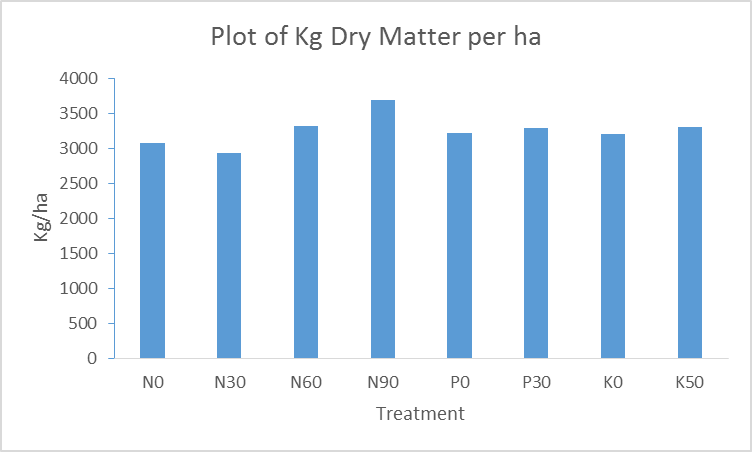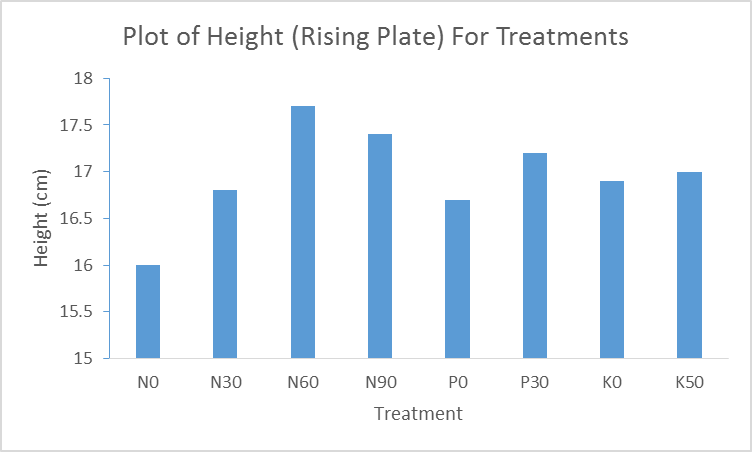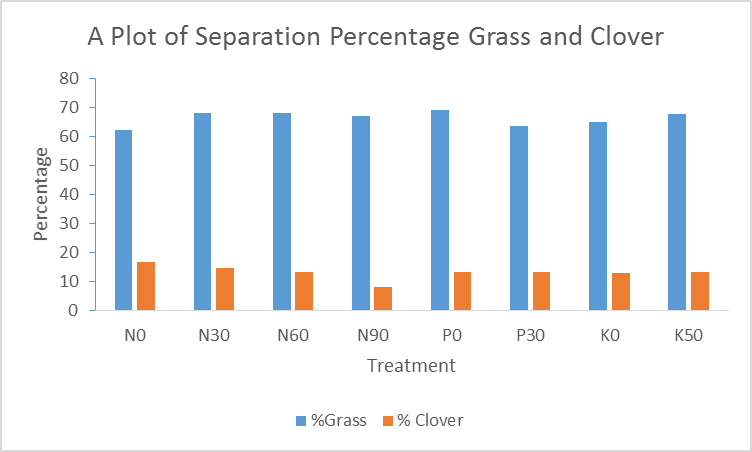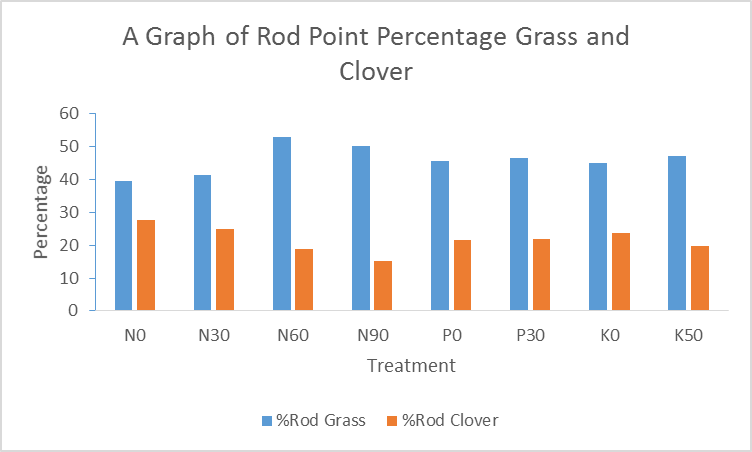Introduction
A crucial part of the successful production of livestock is making certain that there is adequate grass to cater for hay and pasture needs (Briske et al. 2015). Nevertheless, limited soil nutrients restrain the production of forage. However, with proper management and proper application of fertilizer, the output of pasture fields can be enhanced. Unlike other crops, the application of fertilizer to pasture is determined by the objectives of the pasture.
For instance, the amount of production needed to sustain the animals, the number of grass and legume species growing on a plot, the season, and anticipated methods of management (Capper & Bauman 2013). Therefore, the strategic timing of fertilizer application and good management tactics can lead to profitable pasture production (Simpson et al. 2014).
The normal growth of plants requires a balance in the availability of certain nutrients. The soil contains small quantities of particular nutrients, which can satisfy plant requirements. However, other nutrients are required in large amounts that cannot be sustained by the soil hence the need to supplement them through the application of fertilizer. These nutrients include nitrogen, phosphorous, and potassium, which are abbreviated as N, P, and K respectively.
The appropriate amount of each nutrient is determined by first sampling and testing the soil to establish the available quantities of these nutrients before deciding on the right amounts to be supplemented. Limited nutrients limit productivity and profitability. Conversely, when the supply of nutrients surpasses plant needs, there may be a build-up in the plants and soil or loss through leaching and erosion. This experiment aims to determine the role of fertilizers in pasture production and to establish the appropriate use of pasture sampling to assess pasture mass and botanical composition.
Materials and Methods
This experiment was conducted in the Governor’s house by undergraduate students. A factorial experimental design was used with sixteen treatment combinations and randomized blocks of replicates (four replicates for each treatment). The sixteen treatments were done using three main treatments at varying levels. The treatments included the addition of phosphorous at 0 and 30 kg per hectare, potassium at 0 and 50 kg per hectare, and nitrogen at 0, 30, 60, and 90 kg per hectare. Therefore, there were 64 plots in total.
The evaluation of pasture growth was done using several techniques such as rod point, rising plate (pasture meter), and dry matter percentage. Pasture frequency data were taken from each plot twenty times using rod point and ten times using the rising plate technique. Large quadrats were used to harvest samples from each plot.
The harvested samples were taken to the lab where four sub-samples were taken from each sample. Fresh weights of one of the four sub-samples from each main sample were recorded. Pastures in the sub-samples were then separated into grasses, clover, and weeds after which the fresh weights of the separated pasture were recorded. The weighed samples were put in the oven at 60oC after which the dry weights of each pasture species were taken. The dry weights were then calculated as a percentage of the fresh weights recorded earlier. Data analysis was done using Proc Mixed in SAS version 9.3.
Results and Discussion
The amount of dry matter per hectare was only significant for nitrogen (P=0.0347). There was a significant difference between nitrogen application at 0 and 60 kilograms per hectare. In the rising plate and percentage measurements, no effects were significantly different. In the percentage clover and percentage rod clover, there was a significant difference in nitrogen (P=0.0244 and P=0.0064). The differences were substantial between 30kg/ha and 60kg/ha. For the percentage of grass, the impact was also substantial for nitrogen only (P=0.0240). The impact was significant at nitrogen levels of 30kg/ha and 90kg/ha.
The findings are summarized in Figures 1 to 4.




This experiment aimed to determine the role of fertilizers in pasture production and establish the appropriate use of pasture sampling to assess pasture mass and botanical composition. From the findings, it was evident that nitrogen was the most important nutrient that influenced the botanical composition of pasture. Other nutrients such as phosphorous and potassium were also vital. However, their contribution was not statistically significant.
These findings could be attributed to the role of nitrogen in the biosynthesis of biomolecules such as nucleic acids, amino acids, proteins, as well as other nitrogen-containing components that are vital for life (Lincoln & Vitousek 2016). The nitrogen utilized by plants is usually in the form of urea.
Nitrogen has been reported as the most important nutrient that influences the dry-matter content and the sustainability of persistent grasses (Lincoln & Vitousek 2016). However, the application rates for nitrogen are not determined by the outcomes of soil tests but are computed according to the anticipated yield. Consequently, the benefits of nitrogen application may not be economically viable if the pasture is not converted into a saleable commodity. Currently, nitrogen application levels ranging from 50 to 60 kg per hectare are used in established grass farms while higher levels reaching 80 kg/ha are applied in extensive hay production systems (Silveira et al. 2011). These quantities correspond to those used in this experiment.
Previous studies have reported that pasture production reduces as the number of nutrients diminishes (Silveira et al. 2014). However, in this experiment, the production in the form of dry matter per hectare, height, percentage grass, and clover was not significantly different from zero application of nitrogen, phosphorous, and potassium. These observations implied that the natural fertility of the soil (without the addition of fertilizer) was relatively satisfactory.
The role of legumes in nitrogen fixation is another contributing factor. Plants are incapable of using nitrogen in the free molecular form that is found in the air. Clover is a legume plant that is known for its nitrogen-fixing properties. Nitrogen fixation is the process that transforms the free atmospheric nitrogen into ammonia, which plants can use (Bruning & Rozema 2013). Legumes contain nodules in their roots, which harbor nitrogen-fixing bacteria such as Rhizobiaceae and α-Proteobacteria species. Nitrogen fixation by legumes contributes to the amount of nitrogen in the soil, which may be between 25 and 75 pounds of nitrogen per acre annually.
This amount increases to several hundred pounds in a cropping system (Denton, Pearce, & Peoples 2013). The efficacy of nitrogen fixation by legumes is influenced by the presence or absence of plant stresses such as nutritional stress, water, and temperature. The alleviation of nutritional stress enhances nitrogen fixation. On the other hand, excessive availability of nitrogen in the soil diminishes the nodulation of legumes thus reducing its capacity to fix nitrogen (Peoples et al. 2012).
Additionally, the accumulation of legume nitrogen is a reflection of the legume content and overall productivity of pasture and is proportional to the dry matter content of pasture (Hayes et al. 2016). This phenomenon could account for the low amounts of clover at the nitrogen fertilization rate of 90 kilograms per hectare.
Phosphorous is a non-renewable and limited resource that should be used efficiently by plants for economic gains (Simpson et al. 2013). The dry matter per hectare was almost equal at phosphorous application levels of 0 kg/ha and 30 kg/ha (Figure 1). A study by McLaren et al. (2016) shows that only about 35% of applied phosphorous is used up by clover while 28% is recovered in the top layer of soil. Therefore, it is necessary to ensure that phosphorous amounts in the soil are not higher than the minimum concentration required for maximal pasture production to avoid wastage.
Conclusion
Pasture fertilization is crucial to the wellbeing of fodder-dependent livestock systems. Nitrogen plays a significant role in pasture productivity. Maintaining productive pastures is determined by the proper application of fertilizer and management practices. The productivity and nutritional content of pasture are proportional to the soil nutrients. However, the fate of applied fertilizers is complicated by factors such as application proportions and scheduling, type of fertilizer, and soil features.
Limited nutrients curtail plant growth while excessive application leads to wastage and economic losses. Therefore, it is essential to integrate all the factors that maximize fertilizer efficiency while safeguarding natural resources.
References
Briske, DD, Zhao, M, Han, G, Xiu, C, Kemp, DR, Willms, W, Havstad, K, Kang, L, Wang, Z, Wu, J & Han, X 2015, ‘Strategies to alleviate poverty and grassland degradation in Inner Mongolia: intensification vs. production efficiency of livestock systems,’ Journal of Environmental Management, vol.152, pp. 177-182.
Bruning, B & Rozema, J 2013, ‘Symbiotic nitrogen fixation in legumes: perspectives for saline agriculture,’ Environmental and Experimental Botany, vol. 92, pp. 134-143.
Capper, JL & Bauman, DE 2013, ‘The role of productivity in improving the environmental sustainability of ruminant production systems,’ Annual Reviews in Animal Biosciences, vol.1, no. 1, pp. 469-489.
Denton, MD, Pearce, DJ & Peoples, MB 2013, ‘Nitrogen contributions from faba bean (Vicia faba L.) reliant on soil rhizobia or inoculation,’ Plant and Soil, vol. 365, no. 1-2, pp. 363-374.
Hayes, F, Mills, G, Jones, L, Abbott, J, Ashmore, M, Barnes, J, Cape, JN, Coyle, M, Peacock, S, Rintoul, N & Toet, S 2016, ‘Consistent ozone-induced decreases in pasture forage quality across several grassland types and consequences for UK lamb production,’ Science of the Total Environment, vol. 543, pp. 336-346.
Lincoln, NK & Vitousek, P 2016, ‘Nitrogen fixation during decomposition of sugarcane (Saccharum officinarum) is an important contribution to nutrient supply in traditional dryland agricultural systems of Hawaii,’ International Journal of Agricultural Sustainability, vol. 14, no.2, pp. 214-230.
McLaren, TI, McLaughlin, MJ, McBeath, TM, Simpson, RJ, Smernik, RJ, Guppy, CN & Richardson, AE 2016, ‘The fate of fertiliser P in soil under pasture and uptake by subterraneum clover–a field study using 33P-labelled single superphosphate,’ Plant and Soil, vol. 401, no.1-2, pp. 23-38.
Peoples, MB, Brockwell, J, Hunt, JR, Swan, AD, Watson, L, Hayes, RC, Li, GD, Hackney, B, Nuttall, JG, Davies, SL & Fillery, IRP 2013, ‘Factors affecting the potential contributions of N2 fixation by legumes in Australian pasture systems,’ Crop and Pasture Science, vol. 63, no. 9, pp. 759-786.
Silveira, ML, Obour AK, Arthington, J & Sollenberger LE 2011, ‘The cow-calf industry and water quality in South Florida, USA—A review,’ Nutrient Cycling in Agroecosystems, vol.89, no.3, pp. 439–452.
Silveira, ML, Rouquette, FM, Smith, GR, da Silva, H & Dubeux, JC 2014, ‘Soil-fertility principles for warm-season perennial forages and sustainable pasture production,’ Forage and Grazing Lands, vol. 12, pp. 1-9.
Simpson, RJ, Richardson, AE, Nichols, SN & Crush, JR 2014, ‘Pasture plants and soil fertility management to improve the efficiency of phosphorous fertiliser use in temperate grassland systems,’ Crop and Pasture Science, vol. 65, no.6, pp. 556-575.